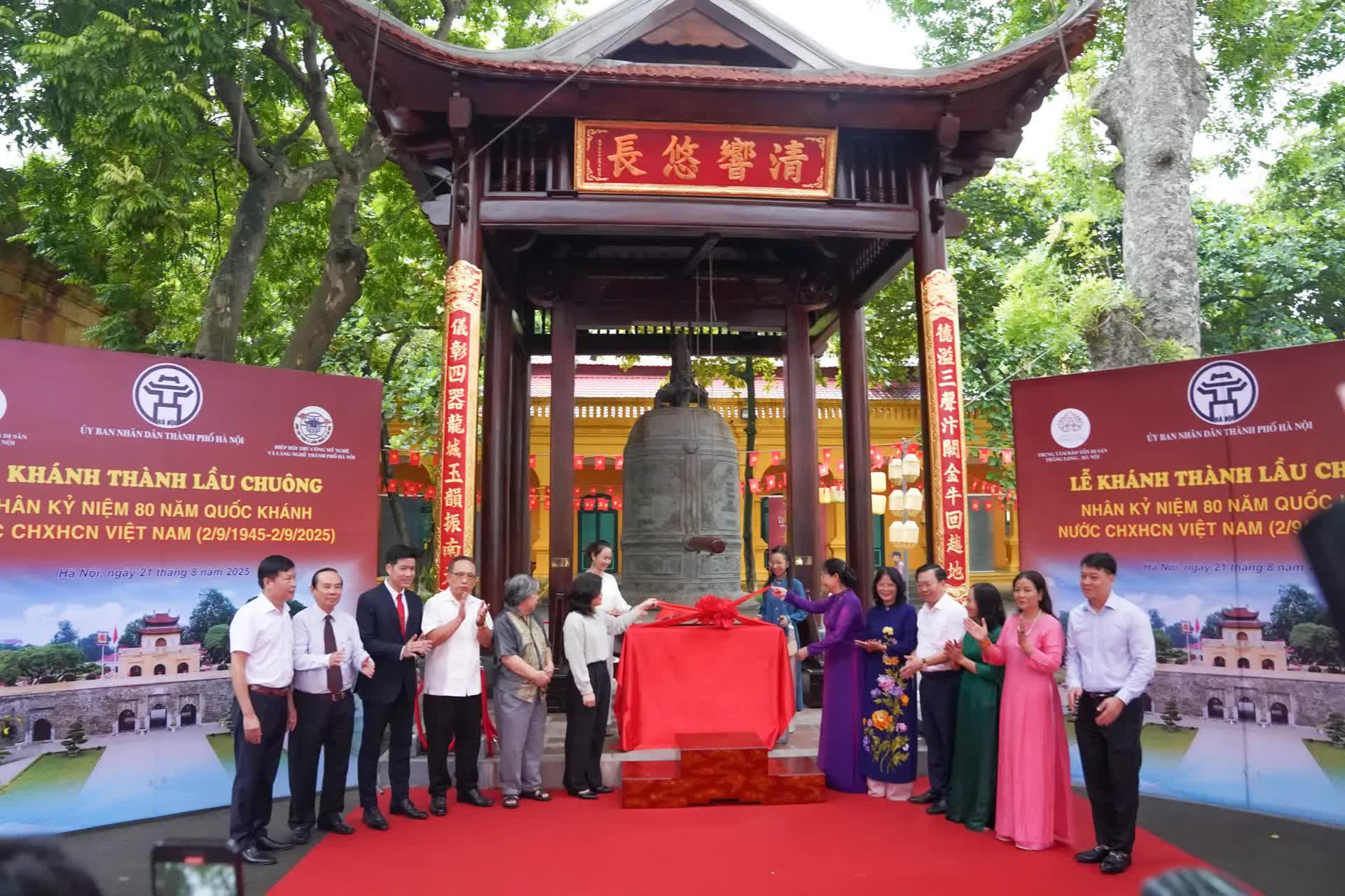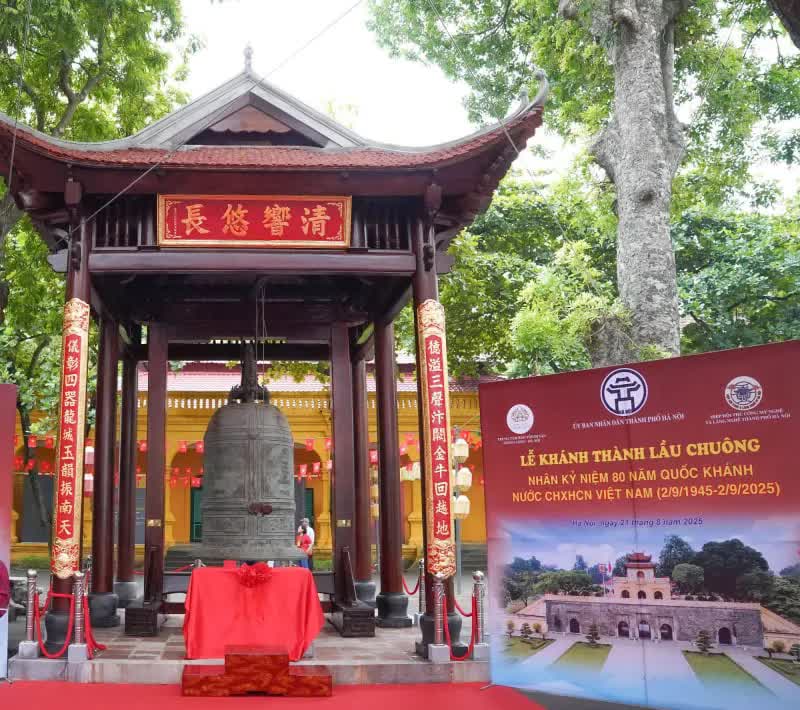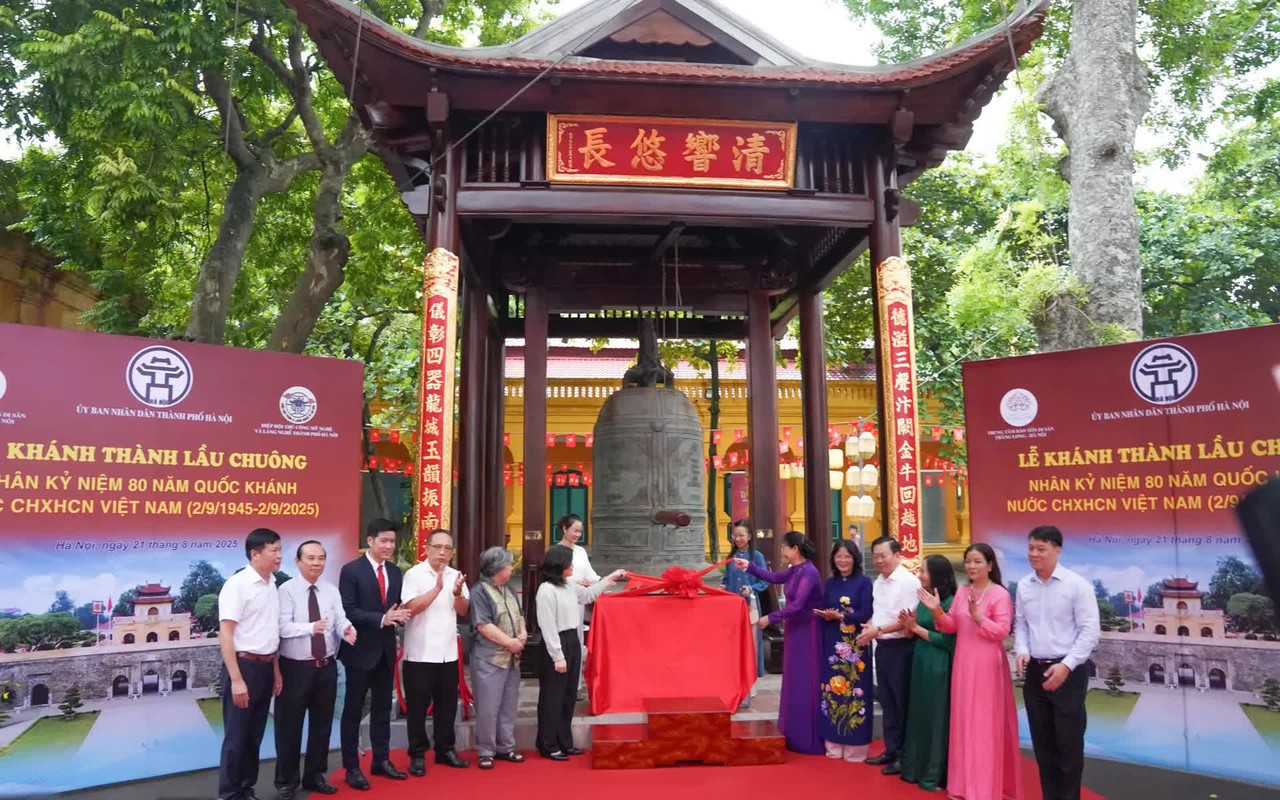THE HANOI TIMES — The inauguration of the bell tower at the Thang Long Imperial Citadel took place in celebration of the 80th anniversary of the August Revolution and Vietnam’s National Day (September 2), marking a profound moment of cultural pride and national remembrance.

The newly-inaugurated bell tower at Thang Long Imperial Citadel in Hanoi. Photo: VGP
Recognized as a UNESCO World Cultural Heritage Site in 2010, the Thang Long Imperial Citadel is not just a relic of Vietnam’s royal past; it is a living testament to over a thousand years of resilience, ingenuity, and national identity. The citadel preserves layers of history intertwined with the artistry of traditional craft villages, echoing the voices of generations past.
Among its most treasured artifacts are three sacred objects crafted by skilled artisans: the giant drum, a gong, and a bell. These masterpieces were created in 2010, when the Hanoi Handicraft and Craft Village Association presented them to the citadel during the grand celebration of the 1000th anniversary of Thang Long - Hanoi.
They symbolize the enduring spirit and cultural refinement of the Vietnamese people.
However, the passage of time and the elements took their toll, particularly on the bell tower, which had deteriorated significantly, while the drum had also been damaged. Much of the damage was caused by exposure to weather and the materials used in the original construction.
In response, the association, with the support of its members, artisans and businesses, initiated a careful and respectful restoration project. The effort was not only to conserve these sacred objects but also to revitalize traditional Vietnamese craftsmanship and pay tribute to the country’s emperors, scholars and ancestors.

The newly built bell tower at Thang Long Imperial Citadel in Hanoi. Photo: An Ninh Thu Do
According to Nguyen Hong Chi, Deputy Director of the Thang Long - Hanoi Heritage Conservation Center, the bell tower is not only an aesthetic work but also a sacred cultural and spiritual symbol, honoring the Thang Long Imperial Citadel as a World Cultural Heritage Site.
"It strengthens the pride and responsibility of today’s generations in preserving and promoting the invaluable legacy of our ancestors,” said Chi.
Now fully restored, the bell tower, alongside the drum tower, forms a harmonious and majestic focal point within the citadel grounds. More than a visual highlight, it serves a deeper purpose: the bell will ring out during significant cultural and ceremonial events, connecting the past with the present and welcoming visitors to experience the soul of Vietnam’s capital.
According to Ha Thi Vinh, Chairwoman of the Hanoi Handicraft and Craft Village Association, the bell tower is an architectural achievement and a living cultural space, bridging between heritage and community.
"It embodies the enduring vitality of Vietnamese craft villages and enhances the experience for visitors to the site," said Vinh.
She said that the restored bell tower stands as a meaningful gift to future generations, reinforcing the cultural and spiritual essence of the Thang Long Imperial Citadel - a heritage site that continues to inspire pride, reverence, and curiosity in all who walk its ancient paths.


